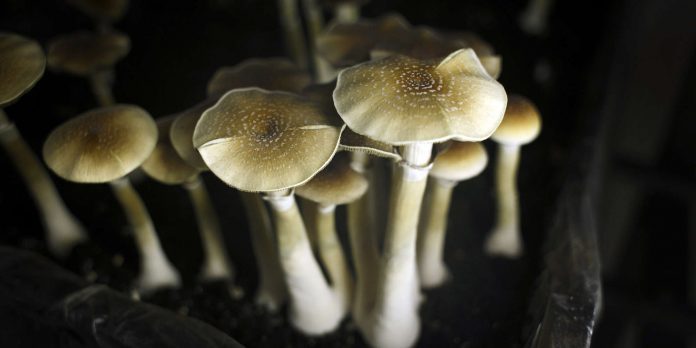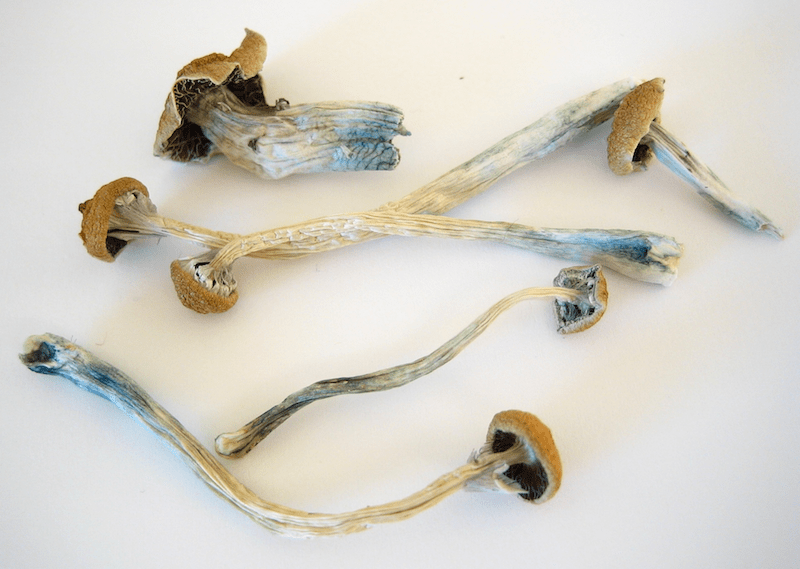The first time I took psychedelic mushrooms it was an accident.
I was in college, at a friend’s party. A European hippy buddy had brought a big bag and left them out. I ate a handful, thinking it was some weird Euro trail mix or something. My sentence construction took on Yoda-like tics (ie: delicious, this beer is) and I went back to my dorm, played “Slanted and Enchanted” on headphones and missed class the next morning.
I’m sharing this two-decade-old story not only because it’s an entertaining snapshot of my vibrant, youthful idiocy. It also illustrates the essential “naturalness” of psychedelic mushrooms. They don’t look like drugs. They look like food. And beyond their appearance, there are larger arguments for ingesting them, as their effects mirror a critical restorative body function: the dreaming that occurs during REM sleep.
People in Europe, North and South America have used psychedelic mushrooms for centuries. Aztecs called them the flesh of the gods and used them in spiritual rituals until Christian leaders banned them for idolatry. Prior to government prohibition in the early 1970s, researchers believed psychedelics could combat addiction and mental illness. Government prohibition choked back research opportunities, but since the ‘90s, scientists have again explored the mushrooms’ potential use as treatment for anxieties, compulsive disorders and clinical depression.
Neuroscience indicates a close connection between sleep and psilocybin, the main psychoactive chemical found in magic mushrooms. When the liver metabolizes psilocybin, it processes it into psilocin, a chemical that bonds with receptors for serotonin, a neurochemical associated with sleep and mood.
Recent research provides a further connection between psilocybin and sleep: it appears to make the brain believe it’s dreaming. In a small study from 2014, researchers at Imperial College London monitored the brain activity of 15 people injected with psilocybin. Researchers chose participants comfortable with psychedelics. For the study, said drug-friendly folks had to trip while inside the cramped chamber of an MRI machine. Through the functional magnetic resonance imaging scans, researchers traced blood flow to see how different regions of the brain interacted with psilocybin.
You’d think a psychoactive material would flare haphazardly through synapses to create a blaze of brain activity. That’s true in part. Psilocybin does fire up the parts of the brain associated with emotion, memory and arousal. But it also dampens the brain regions associated with higher thinking and our sense of self.
The researchers noted that activity in so called “primitive” brain regions associated with emotional thinking, such as the hippocampus and the anterior cingulate cortex, became more pronounced. The activity was similar to the pattern seen while people dream.
In a separate 2014 brain imaging study, psilocybin appeared to short circuit a part of the brain involved in creating depression and anxiety. The amygdala, two small almond-shaped neuron clusters buried in our temporal lobe, governs our emotional responses to sensations and experiences. The cluster on the right hand side governs negative emotional reactions such as fear. University of Zurich researchers found that psilocin weakens the brains ability to process negative stimulation created by that realm of the amygdala.
This is but one of several examples of indications that psychedelic use can be a corrective for disordered minds. Alcoholics Anonymous founder Bill Wilson advocated giving LSD to problem drinkers in the 1950s. Todays researchers believe further study could have applications for other mental illnesses as well.
“Psilocybin may help alleviate symptoms of depression by allowing patients to change their rigidly pessimistic patterns of thinking,” Imperial College London researcher Robin Carhart-Harris wrote.
But while psilocybin lights up emotional parts of the brain, it dampens activity in the sections that foster our sense of identity. Activity in the brain network linked to high-level thinking, including the anterior cingulate cortex and fronto-insular cortex, appeared less coordinated under psilocybin’s influence. The researchers believe the disjointed activity is connected to the loss of ego and sense of self often reported by psilocybin users.
“This finding was exciting because it synched with the idea that psychedelics cause temporary ‘ego dissolution,’” Carhart-Harris wrote.
While the research is promising, it’s important to remember these are small studies that indicate possibilities instead of proving conclusions. Also, the Imperial College of London study participants were selected for their comfort with taking hallucinogens, an experience many find unpleasant. People react differently to drugs and bad trips are a real and truly excruciating potential threat. There is no silver bullet for longstanding psychological problems.
Pangs of self-doubt, anxiety and acute awareness of one’s own problems and shortcomings are common causes for sleeplessness. A lack of ego, increased emotional strength and a more positive attitude seems like a perfect table setting for drifting into a dream. The consensus among psychedelic users is that sleeping on psychedelics is rare, if not impossible. For most, the drug experience is too stimulating to accommodate sleep.
One rare user able to fall sleep while under on mushrooms he ingested the mushrooms at the tail end of a night of heavy drinking — said subconscious tripping created a vivid lucid dream experience.
“Parts of it were like playing an incredibly realistic video game,” Shroomery member Pazuzu wrote. “I slept through the whole trip, which is unusual since I can’t sleep until completely down from acid or shrooms. If the trip had woken me up, I would have stayed up, but the alcohol kept me sedated all night.”
While sleeping on mushrooms may be impossible, there are indications that psilocybin could have a positive influence on sleep overall, however. [Another shroomery poster https://www.shroomery.org/forums/showflat.php/Number/8096435 claimed his dreams were dulled by sustained marijuana use but returned after ingesting magic mushrooms.
Using psilocybin to rewire a brain that’s forgotten how to dream has a nice feel to it. Something about the idea seems right. It would explain why psychedelic mushrooms grow so easily in the wild and why they’d look like something unsuspecting idiots such as myself would pop into their mouths.
Photos via iStock by Getty Images, Wikipedia, Se Re/Flickr, Giphy
This article by Adam Bulger originally appeared on Van Winkle’s.



